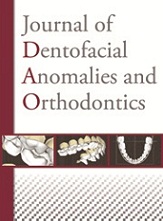Article contents
A new method of using cephalometric measurements in orthodontics (part 2) or how standard deviations can be the practitioner’s false friends
Published online by Cambridge University Press: 01 August 2011
Abstract
It is generally agreed that cephalometric analyses of the Americans Ricketts, Steiner, and Tweed are of questionable utility. The C.R.A.N.I.O.M group has formulated a new method of using cephalometric measurements that it believeswill be moderately helpful to orthodontists in making their diagnoses. We analyzed 83 young adults in Class I occlusion who had had no orthodontic treatment.
The most interesting new formulation of our plan was to examine the extremes of the variables that we considered in this population. These figures constitutedlimits that differed widely fromeach other: there wasmore than a 30°gap betweenthe measurement of the incisor inclined furthest buccally and the one inclined mostlingually (or palatally).
Accordingly, for these lower anterior teeth inclinations to Downs’s mandibularplane ranging from 78 to 114°were acceptable. And for the maxillary incisorsinclinations to the Frankfort plane varying from 97.5 to 130.1° are considered to be ina standard range. The need to reposition incisors in order to conform towhat we cannow see as an abusively rigid normal accordingly occurs much less frequently.
For this reason, orthodontists will find far fewer indications for the extraction of bicuspid teeth than they would in rigidly adhering to the standards imposed by the Ricketts, Steiner, and Tweed cephalometric analyses. We believe that measurements of skeletal, osseous structures merely differentiate between various typologies and do not describe forms that constitute anomalies.
The C.R.A.N.I.O.M group affirms that cephalometrics occupies a position in thearray of orthodontic diagnostic tools that comes after the assessment of esthetic,periodontal status, and muscular equilibrium.
Keywords
- Type
- Research Article
- Information
- Journal of Dentofacial Anomalies and Orthodontics , Volume 14 , Issue 1: P. Fauchard - Varia , March 2011 , 105
- Copyright
- © RODF / EDP Sciences
- 1
- Cited by


